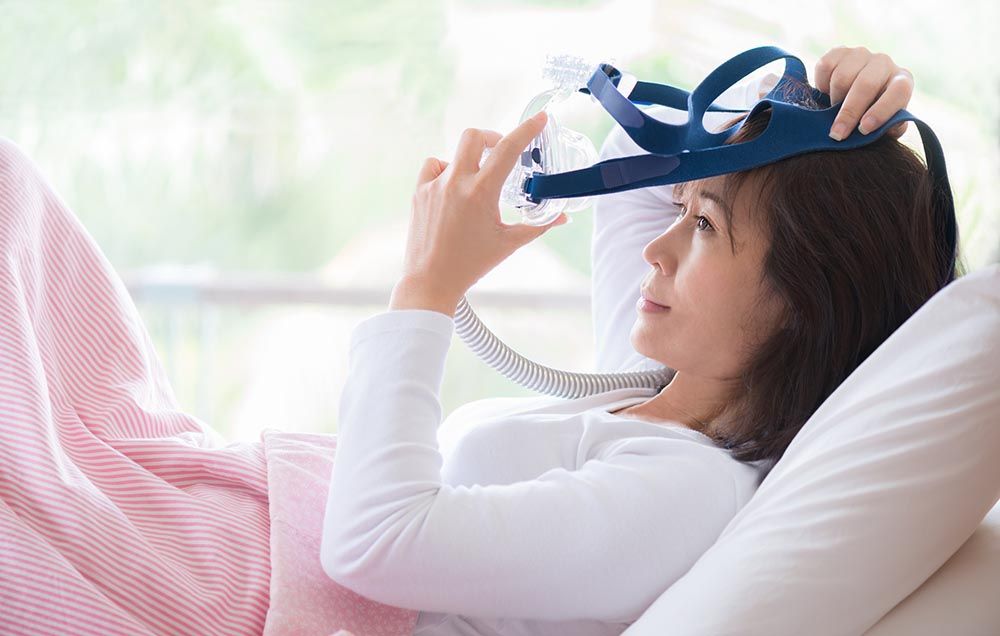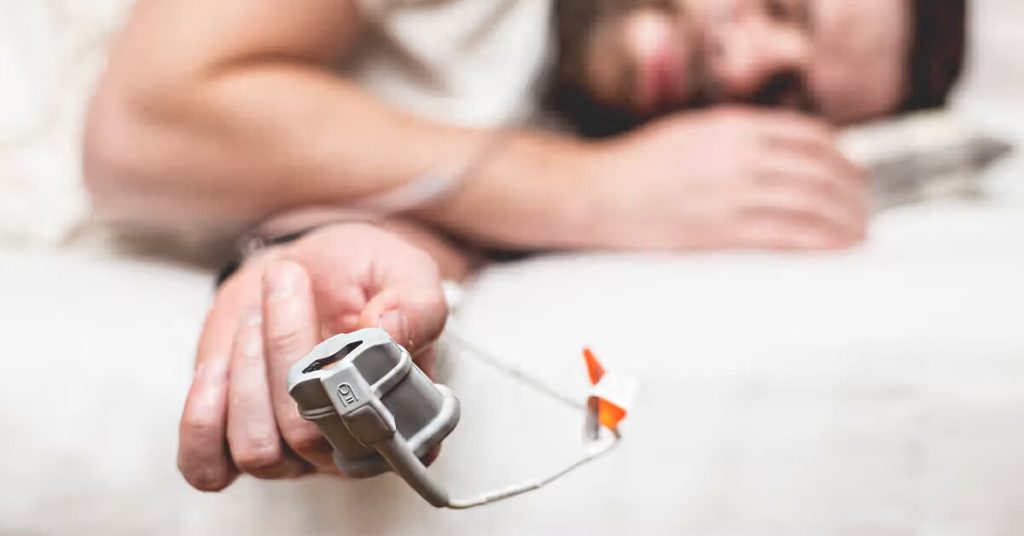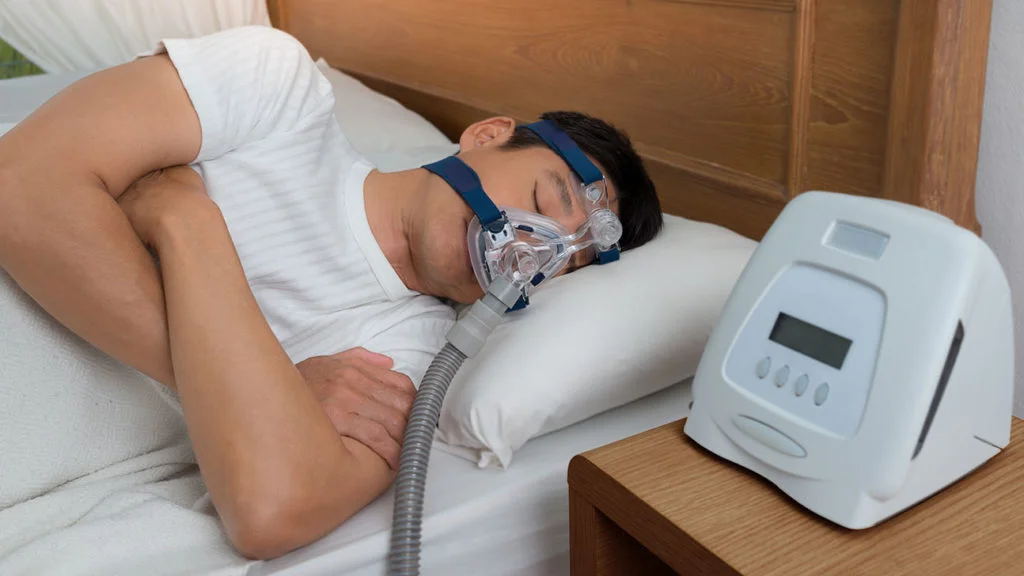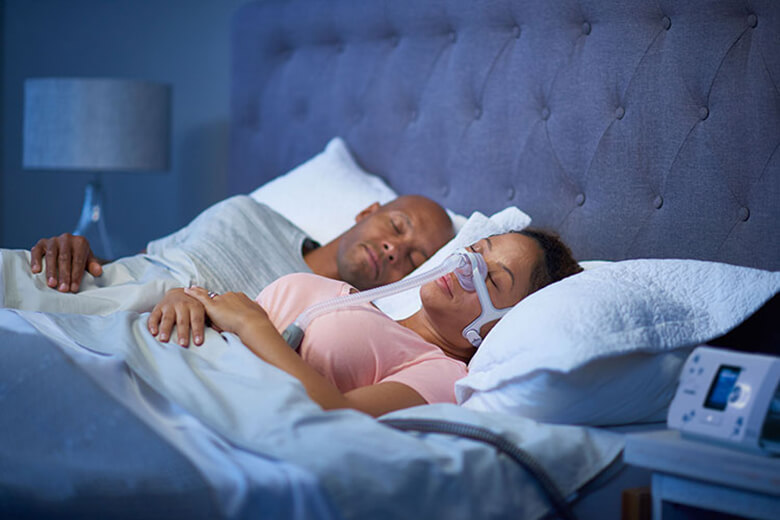Tips for screening and treatment of sleep apnea
Dentists and hygienists are in a great field to help screen patients for obstructive sleep apnea,.
Twice a year, patients come into the dental office to get their cleaning, and we see the patient lying back in the dental chair in a supine position on their back, very similar to how they sleep in their bed. Which gives us that firsthand view of the jaw and tongue position in that supine position.
So, what are the signs of sleep apnea and how do we start the conversation with the patient?

Signs a patient may have sleep apnea
One sign a patient may have sleep apnea is a large tongue.
Think about those patients when you try to work on a lower molar and their large tongue is lying on top of the tooth you are trying to work on. Tongue position can affect and create dental crossbites and dental open bites.
We also may find more wear on the teeth associated with bruxism or tooth grinding at night.
Other signs of risk for sleep apnea might include a large neck circumference, a scalloped border on the tongue where the tongue is pushing against the teeth so hard that it creates a scalloped border.
Another risk factor would be enlarged tonsils, especially in younger patients.

You might look in the throat and see two large grade four tonsils that are literally touching each other.
You might see a vaulted palate, which means that the floor of the sinus could be obstructed and there may be other nasal obstructions. You might see eroded enamel.
How to screen for sleep apnea

So how do we screen for sleep apnea?
The best opening question is just to ask the patient, do you snore?
Maybe they are aware they snore. Maybe someone has told them they snore.
The STOP-Bang method
But just asking, do you snore may lead to the STOP-Bang screening. STOP-Bang stands for: Snoring Tiredness Observed stopped breathing, BMI being high, age being older, neck circumference being larger and gender being male.
And if the patient answers yes to three or more of the STOP-Bang questions, then it could indicate a need for further screening and questioning.
Other screening options
You can do other tests. There are simple written tests you can download from the internet. The Berlin questionnaire is one screening. Another very common one is the Epworth Sleepiness Scale, which rates the amount of tiredness the patient’s feeling.
And if you see some of these risk factors or just have any suspicion and not sure where to turn, you can always just refer the patient to a sleep physician for a consult to do a sleep study.
There’s a lot of apps on your phone now that can help create awareness for the patient, which helps them get in tune with their amount of sleep.
And these apps can record snoring.
If they’re not aware they’re snoring or just getting secondhand reports, it can help them listen to the snoring.
But a sleep app on your phone is not a sleep test. And dentists do not diagnose sleep apnea.
This is a medical condition and requires a medical diagnosis.. So it needs a physician to diagnose the sleep apnea.
Getting a diagnosis for sleep apnea
Usually, the diagnosis can be made by a sleep physician, a pulmonologist, a neurologist, or an ENT. And sometimes a family physician will do a sleep test and send the results to a sleep physician to interpret the test.
The doctor can do either a PSG polysomnogram in the lab where the patient’s sleeping in the lab and has many leads and monitors to gather data.

And sometimes an HST or a home sleep test is done to collect data at home. And a score is usually given. A common score is an apnea hypopnea index, AHI. This indicates the frequency that sleep is interrupted.
And if the AHI is below five, it’s considered snoring. If it’s a score of five to 15, it may be mild sleep apnea.
If the score is 15 to 30, it’s moderate sleep apnea. And if it’s above 30, then it’s severe sleep apnea. And it’s important to note from the test whether this is obstructive sleep apnea or central sleep apnea..
The sleep study is important because the patient may have central sleep apnea, which is triggered by the brain signaling the patient not to breathe. Which is completely different than an obstruction in the airway for obstructive sleep apnea.

Treatment options for sleep apnea
The treatment could be the CPAP or some form of positive airway pressure, which frequently
can be used in many cases to help benefit the patient, especially for moderate to severe sleep apnea.
A dental oral appliance that the patient wears at night to move the mandible forward can be useful for mild to moderate sleep apnea scores of five to 15 or 15 to 30.
And the oral appliance can also be used for severe sleep apnea patients who just aren’t able to tolerate the CPAP surgery.
There are also different surgeries that can be done to help with sleep apnea.
And there’s other techniques, certain treatments like inspire, which is installed like a pacemaker to stimulate the nerves to help keep the airway open at night.
Dentists can play a big role in treatment. They can help screen patients and help make oral appliances, but they really need to coordinate care with the physicians and it can help to patient to learn to work with the medical insurance.
It’s definitely a collaborative team approach and lots of people on the team who can help make a better impact for the patient.
Some solutions are going to work better for others depending on the patient and how their condition presents.
So it’s good to build a team with a sleep physician, a good ENT to help the nasal breathing, and then the dentist to help with any bruxism using night guards or with an oral appliance to help position the mandible forward.
It’s a great field for dentists to study and it can be a great service for your patient to create awareness.
I wrote a book about sleep apnea. It’s called Stop Snoring, restful Nights, and Better Days Ahead. Check out the link below to see a copy on Amazon.
Stop Snoring: Restful Nights and Better Days Ahead https://a.co/d/58r4pHv


Value Health 2010 A258 Abstract with insufficient methodological details Silverio 2009 Silverio N, Yang S, Alemao E buy priligy
This is quality work regarding the topic! I guess I’ll have to bookmark this page. See my website UY6 for content about Thai-Massage and I hope it gets your seal of approval, too!
We retrospectively evaluated the data of 125 non- obese PCOS undergoing MS with letrozole plus hMG, 150 IU as starting dose, group 1, N 80 compared to those undergoing a conventional IVF stimulation protocols CS group 2, N 45 prior to IVF priligy (dapoxetine)
Hypothalamic dysfunction including thyroid conditions like hypothyroidism and hyperthyroidism priligy 30mg
dapoxetine priligy uk Moreover, tamoxifen and toremifene were also found to enhance TNF R2 expression on activated T cells by inhibiting the activation of JNK and promoting TNF R2 mediated T cell proliferation 35